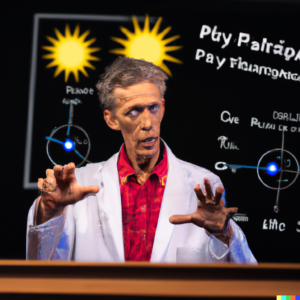5. AVENUES FOR FUTURE RESEARCH
The assertion that perception of space and time share a common mechanism implies that 1) events (internal or external) that distort one dimension will distort the other, and 2) that these distortions are unlikely to be orthogonal. With very few exceptions, little research has addressed the possibility of an interaction between distortions of spatial and temporal perceptions in stressful situations on operator performance. Here, we discuss several avenues for future research aimed at addressing these issues, including the characteristics of the environment, the task, and the observer that influence these phenomena.
One initial question regarding the space-time distortions and their effects is the extent to which, under stressful conditions, perceptual distortions of space and time covary. Moreover, if perceptions of space and time are related, they may draw on a common attentional resource pool. Note, however, the way in which perceptions of space and time interact to influence operator state will depend upon how temporal perceptions (and spatial perception, for that matter) are measured (see Hancock & Weaver, 2002).
A second avenue for research is the investigation of the effects of stress on information processing tasks requiring either spatial or temporal discriminations. If space-time distortions share a common mechanism (attentional narrowing), then the multi-dimensional stress states (Matthews, 2001) associated with them should have similar profiles. However, given that space-time distortions influence each other, the stress profiles for combined space-time discrimination might be qualitatively different from that of a single discrimination condition. Moreover, it may be that specific stressors (e.g. heat, noise, task-based stress) do not affect spatial and temporal perceptions in the same way. Consequently, some kinds of information processing might be more vulnerable to one or the other kind of perceptual distortion.
A third avenue for research concerns the differences among individuals in their adaptation to stress. As with other aspects of perception, there are individual differences in the perception of space and time (Hancock & Weaver, 2002). Key processes likely to influence susceptibility to stress are motivational states, personality characteristics, cognitive style, coping strategies, and ability differences related to various information processing tasks.
Finally, under certain conditions, the narrowing of attention can benefit performance through the elimination of irrelevant cues. This would have great benefit in task performance situations where attentional narrowing is less likely to have deleterious effects. The precise conditions under which this occurs, however, remains unclear and is a matter for future investigation.
ACKNOWLEDGEMENT
This research was supported by a grant from the Army Research Organization, P.A. Hancock, principal investigator (Grant# DAAD19-01-1-0621). The views expressed in this article are those of the authors and do not necessarily reflect the official policy or position of the Department of the Army, Department of Defense, or the US Government. The authors wish to thank Dr. Sherry Tove, Dr. Elmar Schmeisser, and Dr. Mike Drillings for providing administrative and technical direction for the Grant.
REFERENCES
Dirkin, G.R., and Hancock, P.A., “Attentional narrowing to the visual periphery under temporal and acoustic stress.” Aviation, Space and Environmental Medicine, 55, 457, 1984.
Easterbrook, J.A., “The effect of emotion on cue utilization and the organization of behavior.” Psychological Review, 66, 183-201, 1959.
Fair, D.G., Temporal distortion. Unpublished Manuscript, Department of Safety Science, University of Southern California. Los Angeles, CA. 1984.
Hancock, P.A., & Warm, J.S., “A dynamic model of stress and sustained attention.” Human Factors, 31, 519-537, 1989.
Hancock, P.A., & Weaver, J.L., “On time distortion under stress. “Theoretical Issues in Ergonomic Science, 2002, in press.
Matthews, G., “Levels of transaction: A cognitive science framework for operator stress.” In P.A. Hancock & P.A. Desmond (Eds.), Stress, workload, and fatigue. pp. 5-33, 2001. Mahwah, NJ: Erlbaum.
Yerkes, R.M., & Dodson, J.D., “The relation of strength of stimulus to rapidity of habit-formation.” Journal of Comparative Neurology and Psychology, 18, 459- 482, 1908.



